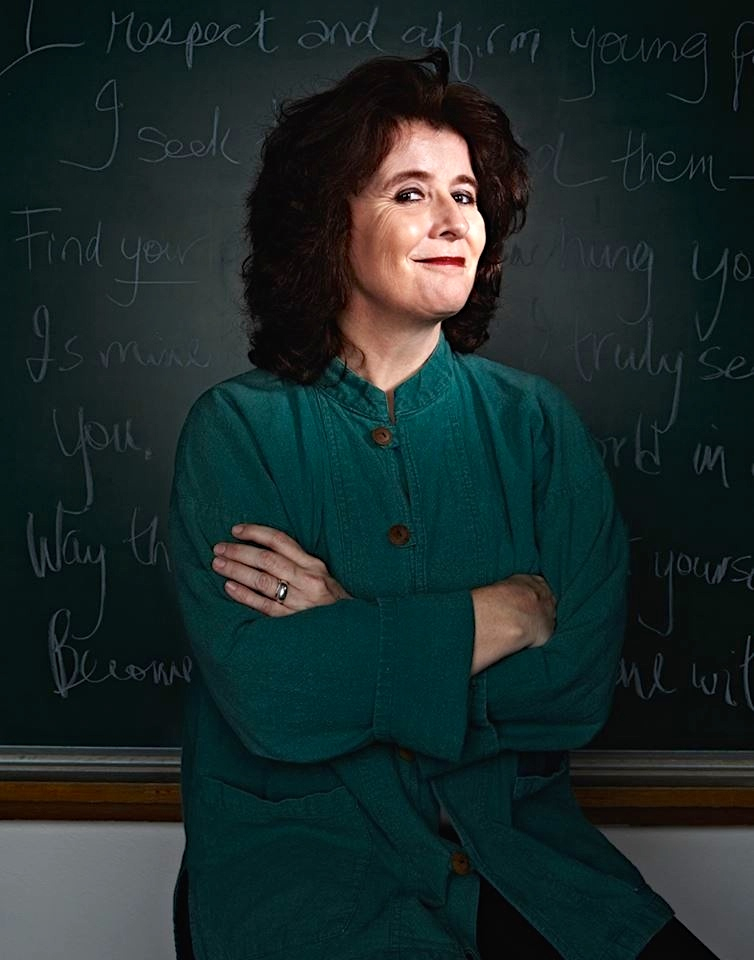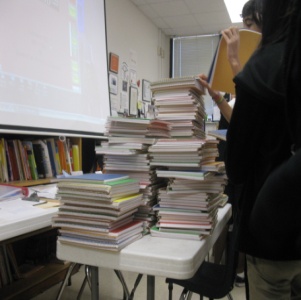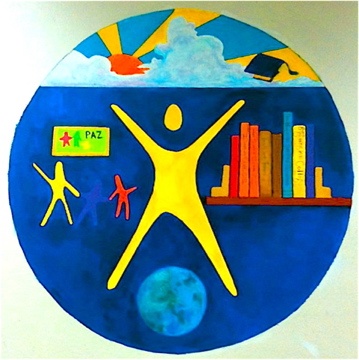Journeys – A Transformative WICOR Project
 AVID Center
AVID Center  Monday, April 22, 2013 at 3:08PM
Monday, April 22, 2013 at 3:08PM By Jeanie Greenidge, AVID Teacher and Coordinator, O'Banion Middle School

The following is an edited version of Jeanie’s recent Access article. It contains some additional resources.
In my middle school AVID classroom at O’Banion, I wanted to empower our AVID students and substantiate their personal transformations by having them participate in Journeys, a six-week WICOR unit created by me, which chronicled their individual transformations – or journeys. While deeply personal for each individual student, it was my hope that the safe and caring environment of the AVID classroom would facilitate easy sharing and mutual acknowledgement.
It was my hope that for a six-week period, our AVID classes in both 7th and 8th grade would explore personal and social history through articles and artifacts, prose, and poetry and would map and chart their change. Through 18 classes, students would study personal and social history to map their journeys. At the end of this time, they would create a cumulative project that would express the key themes and ideas from our six weeks of work, ultimately giving a public voice and face to this substantial and heroic work.
We chose as our cumulative or “showcase” project two murals, one for 7th and one for 8th grade. The murals would be a permanent emblem of our students’ AVID-inspired change and a powerful public testimony of what is possible for all students at our school.
The Heart of Journeys
At the heart of the Journeys Project were three essential questions:
1) Where have I been?
2) Where am I now?
3) Where am I going?
AVID students were each given an interactive notebook (these were provided as a donation by a donorschoose.org grant). On AVID curriculum days, we used writing, inquiry, collaboration, and reading lessons to process our essential questions.

Each curriculum day, our AVID students chronicled their Journeys work in these interactive notebooks or “scribblers.” Students divided the scribblers into three parts, each section documenting a different essential question. I instructed students that they must write a reflection for each Journeys class. These reflections could be formal, using a DLIQ format (What did I do? What did I learn? What interested me? What questions do I have?), or they could be in any form they chose (pictures, poems, or précis). If students did not want me to read reflections, they folded them up and wrote, “Please do not read this,” and I honored their confidentiality.
Some WICOR Activity Highlights
Sacred Objects Show and Tell: Students were encouraged to bring an object from their home that was valuable to their families and to them. They would present this object to the rest of their group. Students were encouraged to listen closely for “echoes,” concepts, words, or phrases that were repeated by members of their groups as they brought these objects to life. The imagery of many of these objects would become emblems in the Journeys murals.
Table-Talk Echoes and Something to Talk About: Students were given two discussion guide sheets and were encouraged to listen for repeated themes and motifs. These repeated themes were noted on sticky notes and written about in the students’ interactive notebooks. In turn, these themes were presented to the entire class in two ways. Seventh-grade AVID students created detailed group posters, and eighth-grade students presented human snapshots of the echoes that they heard during their table-talk discussions.
Going Outside the Box: Personal Stories and Public Lives
I was concerned that six weeks of emotional introspection might be too much for our students, so together, we identified two themes that were outside the personal to study in a relevant and rigorous way. I wanted the students to use the WICOR strategies in a more academic process, while still being able to reflect in their interactive notebooks on connections between them and the topic that we were studying.
The seventh-grade students chose “the Holocaust” as their topic (based on their study of The Diary of Anne Frank in seventh-grade English class. The eighth-graders selected immigration as a subject that, while personal to them, was also scholarly as a topic of Humanities research. This approach, I discovered, connected students in an intimate way with their learning. Using strategies, such as Venn Diagrams, Philosophical Chairs, Socratic Seminars, KWLs, and collaborative Internet research, helped us to explore topics that made our personal stories relevant academically and gave value to stories that had not yet been fully told.
For more examples of WICOR activities and handouts from the Journeys project, click here.
 How to Build Community
How to Build Community
One of the final formal exercises of Journeys was a mind sheet prompting students to narrow down the many images that they felt MUST be on a mural meant to represent them and their struggle.
The process of selecting images was the most daunting when I designed the Journeys curriculum. How would I ever get them to agree? The echoes seem to select themselves, and the voices and themes rose to the surface with no perceived resistance.
Assignments for the Journeys Project, while academically rigorous, were also intimate, personal, and relevant. They resonated for our students. When students were asked to interview an elder in their home about that elder’s school experience, it gave their families’ experience dignity and helped AVID students begin to negotiate their own academic experiences.
 The seventh-grade AVID mural is titled, “In the Moment.” It symbolizes a pride in the AVID designation, recognizing the scholarly works on the spines of the books on the shelf, including The Boy in the Striped Pajamas and How to Get Into College.
The seventh-grade AVID mural is titled, “In the Moment.” It symbolizes a pride in the AVID designation, recognizing the scholarly works on the spines of the books on the shelf, including The Boy in the Striped Pajamas and How to Get Into College.
In AVID, all of us support struggle and demand determination. We ask our students to persevere. We encourage them to learn from mistakes. We let them know that what concerns them and their families is worth the respect of inquiry and analysis. The issues of concern to AVID students and their families (and indeed to all students) are worthwhile, as is the expression of these concerns. A studious inquiry of these issues provides a gateway for a scholastic and college-ready future, while accentuating the innate value of life issues and paving the way for a studious collegiate future.
 In contrast, the eighth-grade mural is titled, “Moving On.” It shows movement, change, and transition, and its nine faces (beginning at the two o’clock position) show Faith, Antepasados (ancestors), Roots in the Family, Friendship, Education Breaking the Bonds of Slavery, America, and finally, the Earth. At center is the road ahead.
In contrast, the eighth-grade mural is titled, “Moving On.” It shows movement, change, and transition, and its nine faces (beginning at the two o’clock position) show Faith, Antepasados (ancestors), Roots in the Family, Friendship, Education Breaking the Bonds of Slavery, America, and finally, the Earth. At center is the road ahead.
Jeanie Greenidge is the AVID Elective Teacher/Coordinator at O’Banion Middle School in Garland, Texas. O’Banion was recently designated an AVID Demonstration School. She has been teaching for 16 years. Her teaching passions include curriculum design, literacy education, and college readiness. The AVID at O’Banion website can be accessed at www.obanionavid.org.
Reader Comments (3)
Hi Ya Jeanie,
What a great blog post. I am going to copy the information you shared and make sure the AVID teachers I get to work with in Elective Teacher Workshops get a copy. I've seen culture walls in classrooms before. Your project increases the impact ten fold.
Once again, you show why you are such a good staff developer.
Way to go! Thank you for sharing.
Hey Mark,
Thanks for your kindness. If you or anyone has any questions, please be sure and send them my way. I can get in touch with you or, even better, get my students to follow up. They are such champions! Thanks again. Jeanie . jfgreeni@garlandisd.net
This is the reason O'Banion became a National Demonstration School. The woman is everything any school would need to make a difference for kids and their futures. I am so proud to call Jeanie a friend and a colleague. Way to go Jeanie!!